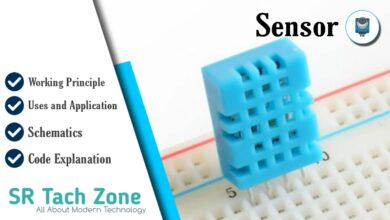What is MQ3 Alcohol Sensor & How does it work ?
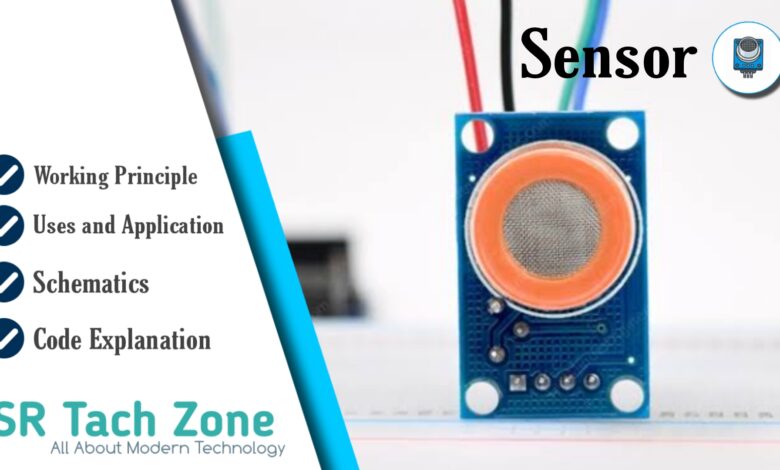
Hey Engineers & Developers! Supposing you’re a long-time subscriber or a first-time visitor to our website, I’m Riyad Munshi, thrilled to have you here. In this blog, you will gain insight knowledge of MQ3 Alcohol Sensor basics of the MQ3 Alcohol Sensor can greatly enhance your projects and applications.
What is MQ3 Alcohol Sensor?
The MQ-3 is a type of gas sensor, specifically design for detecting the presence of alcohol. These sensors are widely use in various applications, including breathalyzers, alcohol detection systems, and other devices where monitoring alcohol levels is essential.
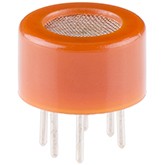
Working Principal of MQ3 Alcohol Sensor!
- Semiconductor Material: The core of the MQ-3 sensor is a semiconductor material, typically SnO2 (tin dioxide). This material has a high sensitivity to the presence of certain gases, including alcohol vapors.
- Heating Element: The sensor contains a heating element that raises the temperature of the semiconductor material to a predefined level. This heating process is crucial for the sensor’s operation as it increases the sensitivity of the semiconductor.
- Interaction with Alcohol Vapors: When alcohol vapors come into contact with the heated semiconductor material, a chemical reaction occurs on the surface of the material. The presence of alcohol causes a change in the electrical conductivity of the material.
- Change in Resistance: The interaction between the alcohol vapors and the heated semiconductor material leads to a change in its resistance. This change in resistance is proportional to the concentration of alcohol in the air.
Hardware Overview of MQ3 Alcohol Sensor!
The internal structure of the MQ3 Alcohol sensor consists of several components.
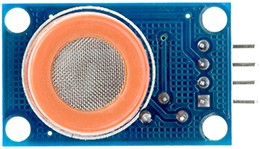
Gas-Sensitive Material: The core of the MQ2 sensor is a gas-sensitive material. It’s electrical conductivity changes when it comes into contact with specific gases. Typically, the gas-sensitive material is a tin dioxide (SnO2) semiconductor.

Anti-explosion network: MQ2 Gas Sensor use a stainless steel mesh called Anti-explosion network. In industrial environments, there is a need for electronic equipment that is designed to prevent the initiation of an explosion. Devices such as cameras, sensors, and communication equipment used in potentially explosive atmospheres may be designed as explosion-proof.

Heater Coil: The gas-sensitive material in MQ2 is heat by a built-in heater coil. The heating process is essential for the sensor’s operation as it increases the sensitivity of the gas-sensitivity.

Ceramic Substrate: The gas-sensitive material is often deposited on a ceramic substrate. The ceramic material provides mechanical stability and electrical insulation.

Adjustment Potentiometer: You can increase decrease sensitivity of MQ2 sensor via a potentiometer, on back of the board . Turn the potentiometer to clockwise for increasing the sensitivity or turn anticlockwise for decreasing sensitivity.
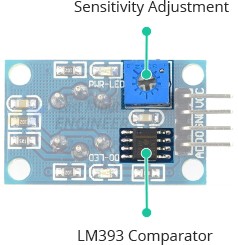
LM393 Comparator: The LM393 is a dual voltage comparator IC (integrated circuit) that belongs to the LMx93 series. The LM393 contains two independent precision voltage comparators with an open-drain output.
Status Led: This module has two LEDs. Power LED ,which will light when power is on.
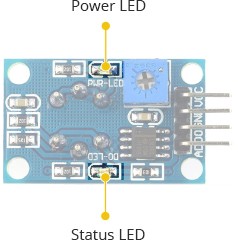
Status LED, it’s light up when the digital output goes LOW.
Technical Specifications of MQ3 Alcohol Sensor
- Sensor Type: Semiconductor gas sensor based on SnO2 (tin dioxide) technology.
- Detected Gases: Alcohol vapors, especially ethanol.
- Operating Voltage: 4.5V and 5V..
- Load resistance: 200 KΩ.
- Heater resistance: 33Ω ± 5%.
- Heating consumption: <800mw.
- Current Consumption: Low power consumption, suitable for battery-powered applications.
- Sensing Resistance: 1 MΩ – 8 MΩ.
- Concentration Scope: 25 – 500 ppm.
- Warm-up Time: Over 24 hour.
- Analog Output: Provides an analog voltage signal that varies based on the concentration of the detected gas
- Digital Output: Some versions of the MQ3 Alcohol Sensor may include a digital output that signals the presence or absence of a certain gas concentration threshold.
MQ3 Alcohol Sensor Pinout

- AO (Analog Output): Connects to an analog input on your micro controller.
- DO (Digital Output): Connects to a digital input on your micro controller (if available).
- GND (Ground): Connects to the ground of your power supply.
- VCC (Power Supply): Connects to the positive supply voltage (usually 5V).
Uses and Application of MQ3 Alcohol Sensor
The versatility and reliability of the MQ2 gas or smoke sensor make it suitable for various applications. Some of the applications include here.
- Breathalyzers: the MQ-3 sensor is commonly used in breathalyzer devices for estimating blood alcohol content (BAC). These devices are often used by polices for roadside alcohol testing.
- Safety Devices: Integration of the MQ-3 sensor in safety devices to detect alcohol levels in environments to ensure safety in vehicles.
Using MQ3 Alcohol Sensor with Arduino
Using an MQ3 Alcohol Sensor with an Arduino is a common and straightforward project. The MQ3 Alcohol Sensor can detect Alcohol . Here’s a basic guide on how you can set up the MQ3 sensor with an Arduino.
Wiring MQ3 Alcohol Sensor to the Arduino
Connect the MQ3 Alcohol Sensor to the Arduino using jumper wires.

- Connect the VCC pin of the MQ2 sensor to the 5V pin on the Arduino.
- Connect the GND pin of the MQ2 sensor to the GND pin on the Arduino.
- Connect the AOUT pin of the MQ2 sensor to any A0 pin on the Arduino.
- Connect the DOUT pin of the MQ2 sensor to any D2 pin on the Arduino (optional).
Power up the Arduino by connecting it to your computer or an external power source.
Arduino Code
/*
Project: Using HC-SR501 PIR Sensor with Arduino
Full Project Link: https://srtachzone.com/what-is-hc-sr501-pir-sensor-how-does-it-work/
*/
const int analogPin = A0; // Analog pin connected to AOUT of the MQ-3 sensor
const int digitalPin = 2; // Digital pin connected to DOUT of the MQ-3 sensor (optional)
void setup() {
Serial.begin(9600); // Initialize serial communication
pinMode(digitalPin, INPUT); // Set DOUT pin as input (optional)
}
void loop() {
int analogValue = analogRead(analogPin); // Read analog value from AOUT pin
int digitalValue = digitalRead(digitalPin); // Read digital value from DOUT pin (optional)
Serial.print("Analog Value: ");
Serial.println(analogValue);
if (digitalPin != -1) {
Serial.print("Digital Value: ");
Serial.println(digitalValue);
}
delay(1000); // Delay for 1 second
}Results
The analog value obtained from the AOUT pin represents the gas concentration. You may need to calibrate the sensor based on your specific requirements and the target gas. The digital value obtained from the DOUT pin can be used to detect the presence of a certain Alcohol beyond a set threshold. Remember to refer to the datasheet of your specific MQ3 sensor model for more accurate calibration and interpretation of sensor readings.
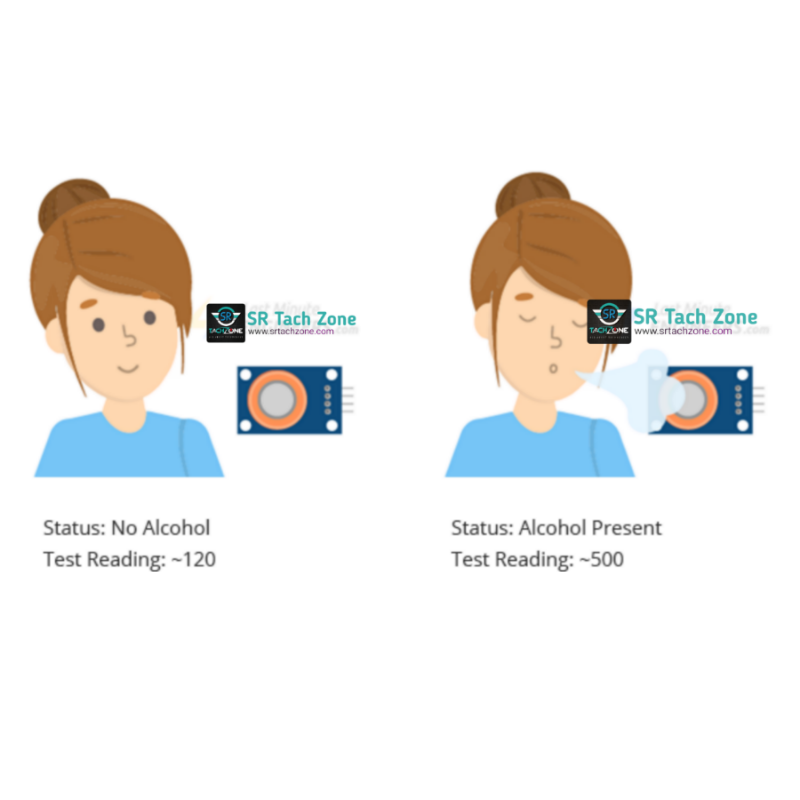
Additionally, consider incorporating safety measures when working with gases and sensors.
Wrapping up
In this post, we’ve covered all the fundamental aspects of the MQ3 Alcohol Sensor. I trust that the information provided has been clear and insightful. Feel free to ask any questions you may have about this topic in the comment section below. I’m here to help and provide additional clarification as needed.


